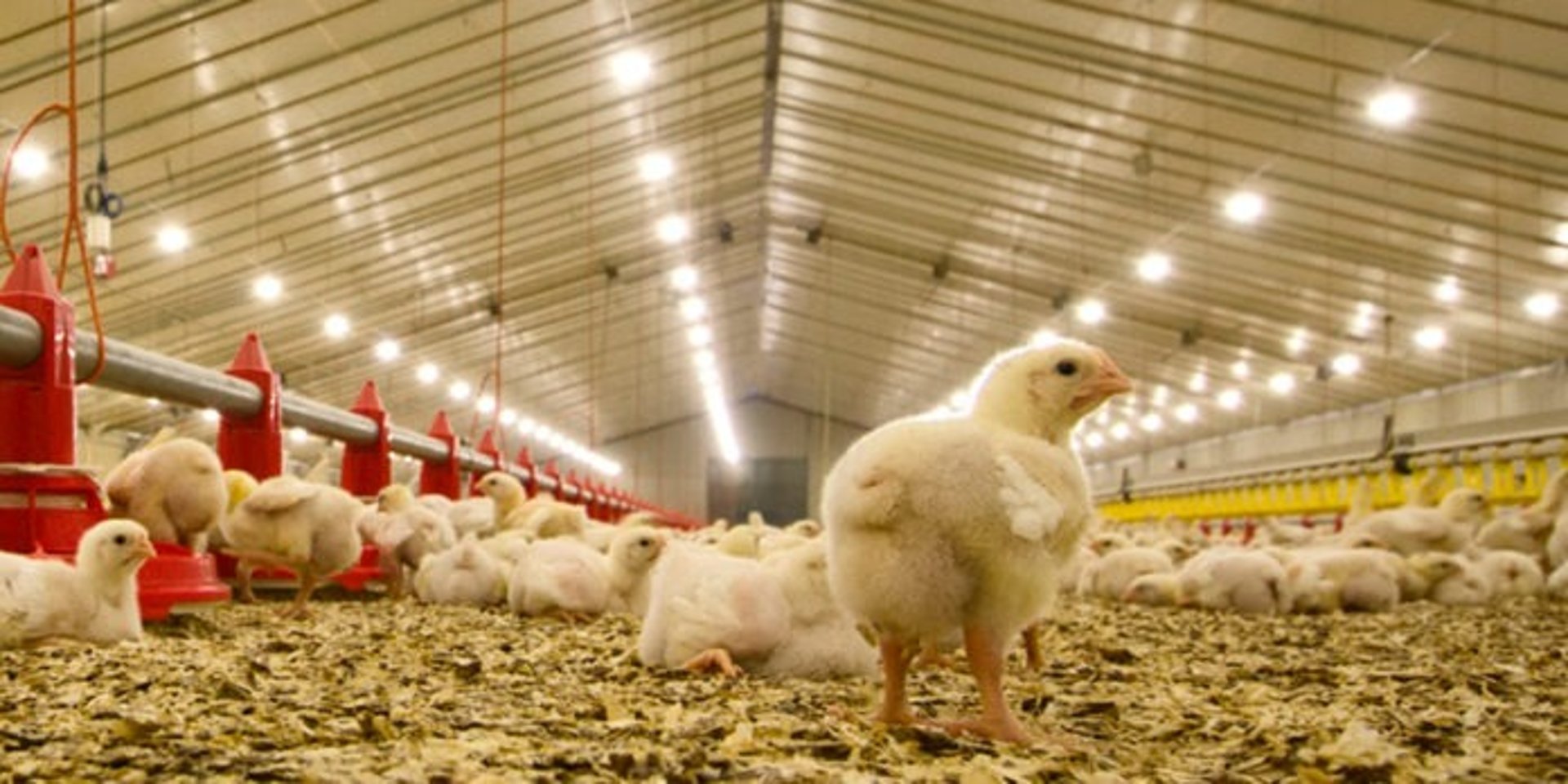
Broiler House Preparation Protocol.
Sanitary preparation between flocks is essential for biosecurity and broiler performance. This systematic process – often called "all-in, all-out" – spans from the departure of the previous flock to the arrival of new chicks.
ANIMAL PRODUCTION
6/20/20253 min read
Sanitary preparation between flocks is essential for biosecurity and broiler performance (1, 2). This systematic process – often called "all-in, all-out" – spans from the departure of the previous flock to the arrival of new chicks. As experts state, "A successful flock begins the moment the previous flock departs" (1). Thus, an organized cleaning and disinfection plan is required to minimize pathogens and ensure optimal conditions before bird placement.
Removal of Previous Flock and Initial Waste
After flock removal, initiate immediate waste and equipment clearance:
Early insect control: Apply insecticides/acaricides within the first hour post-removal while litter is still warm to eliminate ticks, fleas, darkling beetles, and other ectoparasites seeking shelter (3).
Rodent control: Place rodent bait stations in feed storage and perimeter areas while the house is feed-free (4, 5).
Equipment removal: Dismantle and remove all feeders, drinkers, cages, and farming implements for external cleaning (6, 7). Remove used work clothing.
Water and waste drainage: Fully drain water circuits and tanks (8). Remove old litter, excrement, and solid waste (poultry manure) (8, 9). Prompt disposal reduces pest attraction (9).
This phase eliminates gross organic matter. Thorough dry cleaning (sweeping/scraping) is the foundation for effective washing/disinfection (2, 10).
Dry Cleaning (Sweeping/Scraping)
With equipment removed:
Sweep floors, walls, ceilings, and fixed structures; scrape adhered feces/litter (2, 10). Include beams, plastic curtains, and under feeders.
Remove cobwebs, feathers, and dust from ceilings/fans (10).
Optional flame treatment: Surface-flame metal/mesh areas to sterilize heat-sensitive pathogens (12).
Dry cleaning ensures detergents/disinfectants contact exposed surfaces (10, 11).
Wet Cleaning (Washing/Detergents)
Post-sweeping:
Pressure washing: Use alkaline/enzymatic detergents on walls, floors, and ceilings. Focus on gutters, feeders, drinkers, and feed systems. Flush nipple/drip water lines. Hot water improves grease/protein removal (14).
Rinsing: Rinse repeatedly with clean water to eliminate detergent residues (15). Soap residues inactivate disinfectants (15, 16).
Drying: Use fans, open doors, or heaters to dry floors/litter completely before disinfection.
Wet cleaning drastically reduces microbial load. Experts note washing removes more pathogens than disinfection alone (14, 17).
Disinfection
On clean, dry surfaces:
Disinfectant selection: Use food/poultry-approved products (phenols, quaternary ammonium, halogens, aldehydes). Avoid routine formaldehyde due to health risks (18).
Application: Spray/fog all surfaces and equipment. Thermal/compression fogging reaches hidden areas (19, 20). Disinfect water lines by filling with solution for hours (21).
Contact time: Allow 2-4 hours before ventilating. Personnel must wear PPE (gloves, masks, boots) (11, 22).
Disinfection only works on properly cleaned surfaces (11, 17).
Pest Control (Insects/Rodents)
Insects: Treat for mites, fleas, beetles, and flies post-litter removal (23). Install mesh screens.
Rodents: Maintain bait stations in feed areas (4, 5). Seal gaps >2 cm.
Wildlife: Clear perimeter vegetation (5 m) to deter pests (24).
System/Equipment Checks
Feed/water systems: Verify drinker pressure, feeder distribution, and line cleanliness. Disinfect tanks (21).
Ventilation: Test fans, extractors, and thermostats. Adjust curtains.
Lighting/safety: Replace bulbs; check backup generators and fire extinguishers.
All systems must be operational pre-placement (25).
Litter Preparation
Spread new litter (straw, wood shavings, etc.) on dry floors. Agricultural lime aids moisture absorption (26).
Maintain 10-15 cm depth, evenly distributed.
Optional: Pre-treat litter with contact insecticides (26).
Preheat house for chick arrival (27).
Sanitary Downtime
A 14-21 day vacancy period post-cleaning reduces microbial loads (28, 29). Restrict non-essential access. Re-disinfect before flock placement (29).
Biosecurity Measures
Access control: Use footbaths (iodine solution) and vehicle disinfection arches (30, 31).
Dedicated clothing: Require farm-specific PPE and handwashing (32, 33).
Perimeter hygiene: Clear weeds/debris. Disinfect farm equipment.
Water quality: Chlorinate water (2-3 ppm) and disinfect tanks (21).
Conclusions
This meticulous process includes waste removal, dry/wet cleaning, disinfection, pest control, equipment checks, litter placement, and downtime. As emphasized, "Rigorous dry cleaning is the foundation" (2), while washing outperforms disinfection alone in pathogen reduction (17). Implementing these steps protects flock health and optimizes productivity.
Sources: Current poultry guidelines from Sasso Poultry (1, 29), veterinary experts (11, 15), and farming manuals (2, 5) support this protocol.
(1, 3, 4, 6, 7, 8, 13, 17, 19, 21, 22, 29) Limpieza, desinfección y vacío sanitario - Europe | Sasso Poultry
https://europe.sasso-poultry.com/es/articles/limpieza-desinfeccion-y-vacio-sanitario/
(2, 12, 23, 25, 26, 27, 28, 32) El alistamiento previo a la recepción en pollo de engorde - El Sitio Avicola
(5, 10, 14, 15, 16, 20, 24, 30, 31, 33, 34) Microsoft Word - Bioseguridad en granjas avícolas.doc
https://www.adiveter.com/ftp_public/A31307.pdf
(9) argentina.gob.ar
https://www.argentina.gob.ar/sites/default/files/manual_de_avicultura_2oano.pdf
(11, 18) Desinfección de galpones en avicultura. Desinfectantes y Metodología
https://www.veterinariadigital.com/articulos/desinfeccion-de-galpones-en-avicultura/
AgroPetEd
Information about animals and agricultural practices
© 2025. All rights reserved.
